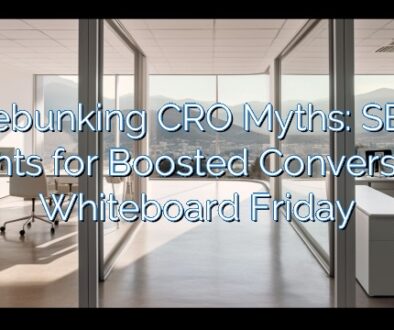SEO Myths Debunked: Separating Fact from Fiction
Demystifying “Toxic” Backlinks: Navigating SEO Myths and Best Practices
Let’s talk about something that’s become a hot topic in SEO circles: so-called “toxic” backlinks. If you’ve ever agonized over these ominous-sounding links and wondered how they might impact your website’s SEO, well, grab a seat. We’re about to dismantle the myths, clarify the facts, and provide you with actionable insights that’ll help keep your site’s performance on the up and up.
Understanding Backlink Types: Spammy, Manipulative, and “Toxic”
First things first, we need to clarify what we mean by different backlink types. There are those spammy backlinks that seem to sprout like weeds – think of those as the pesky junk mail of the internet. They’re low-value, but not inherently dangerous.
Then there are manipulative links. These are the more dangerous cousins, intentionally created to game search engine rankings. They’re often bought or exchanged in schemes that Google frowns upon. If your backlink profile is teeming with these, you might be skating on thin SEO ice.
But what about “toxic” backlinks? Despite the fear, uncertainty, and doubt cast by some SEO tools, the term “toxic” isn’t recognized by Google, and its significance is up for debate. As a digital marketing agency, we’re here to dissect and discuss whether these backlinks deserve the bad rap they receive.
Spammy Backlinks: More a Nuisance Than a Threat
Spammy backlinks are unavoidable. They’re like flyers stuck under your windshield wiper – you didn’t ask for them, but there they are. Google knows this and has become adept at identifying and ignoring these unwanted hitchhikers. Since the Penguin 4.0 update, Google’s algorithms have been designed to devalue these spammy links rather than penalize your whole site. In short, you can generally stop fretting over every odd spammy backlink like it’s a ticking time bomb. However, keep an eye out for patterns that could suggest something more problematic.
Manipulative Links: A Real SEO Hazard
Manipulative links are the real troublemakers. If your site is involved in unnatural link schemes, such as buying links, excessive link exchanges, or other Black Hat SEO practices, then yes, your rankings can and probably will suffer. It’s not just about individual links; it’s about patterns that show an intent to manipulate search rankings. If that’s what’s happening with your site, it’s time to clean house and get back on the straight and narrow.
The Legend of “Toxic” Backlinks: Separating Fact from Fiction
“Toxic” backlinks are a controversial topic for many in SEO. While certain tools wave red flags and sound alarms at the mere mention of them, Google’s webmaster guidelines don’t specifically address such links. John Mueller, Google’s Webmaster Trends Analyst, has been quite clear about dismissing the term. So, should we even be using this term? Isn’t it possible that we’re falling for a bit of SEO tool marketing drama?
The reality is that while bad links can harm your site, true damaging backlinks are a rarity for most websites, especially if you haven’t partaken in shady link-building activities. SEO tools can often flag links as “toxic” due to automated, predefined criteria that may not align with how Google evaluates links. Hence, it’s critical to employ critical thinking and manual assessment when considering link disavowal.
Identifying the Actual Bad Apples
To find truly problematic backlinks, you want to roll up your sleeves and do a manual audit. Look for links from dubious sources, such as Private Blog Networks (PBNs), or those with over-optimized anchor texts that scream “I was made to manipulate rankings!” It’s not a one-size-fits-all approach, but a tailored dive into where these links come from and what story they tell Google about your site.
The trick is to look for patterns. A single off-looking link might not be cause for concern, but a swath of them from sketchy sites might warrant attention. However, not every link that glitters with SEO promise is gold, and sometimes links that appear valuable might be doing you more harm than good.
Are “Toxic” Links Wrecking Your SEO? Here’s What to Do
If after a thorough audit, you find a quagmire of truly manipulative backlinks, you’ve got some cleaning up to do. In cases of manual penalties or an extensive web of dubious links, a disavowal may be in order. However, this is a measure to be taken with caution. The disavow tool is like SEO surgery: necessary at times, but not without risks.
Interestingly, in many cases, disavowing can inadvertently hurt your rankings. This might happen if you disavow links that were, in fact, providing positive signals. It’s SEO’s version of “throwing the baby out with the bathwater.” As always, a nuanced and well-informed approach is key.
Resisting the Urge to Overzealously Disavow
Not every link flagged as “toxic” by an SEO tool is harmful. It’s essential to undertake the painstaking work of manually checking these links before even considering disavowal. Remember, Google has reassured us that their algorithm is more than equipped to parse out the noise of irrelevant links. Use the disavow tool sparingly and judiciously, as overuse may cost you valuable link equity.
To Disavow or Not to Disavow: That Is the Question
The decision to disavow should not be taken lightly. It’s crucial to differentiate between links you require to disavow and those you can ignore. And be aware that if you haven’t engaged in any link schemes and have been practicing white-hat SEO, it’s unlikely that “toxic backlinks” are suppressing your rankings.
Maintaining a Clean and Effective Link Profile
A clean link profile is a balance between elimination and cultivation – removing the links that can potentially harm your SEO and nurturing those that enhance it. But remember, Google’s algorithms are smarter than ever, and unless you’re seeing a clear indication (like a manual penalty) that backlinks are dragging you down, take a deep breath. Chances are, Google’s already given those crummy links the cold shoulder.
Final Thoughts
In the complicated tapestry of SEO, “toxic backlinks” might just be the proverbial Emperor’s New Clothes. They have been sensationalized by some tools, but in reality, Google is already a step ahead. As long as you’re steering clear of manipulative link-building practices, you’re likely on solid footing.
Keen on clarifying your site’s SEO status and conquering your digital marketing with confidence? Don’t hesitate to reach out and book a 15-minute call with Alex Casteleiro. Together, we can unravel any puzzles and forge a path to your website’s success.
FAQs About “Toxic” Backlinks
1. What are “toxic” backlinks?
“Toxic” backlinks are a term used by some SEO tools to describe links that may harm a website’s ranking. However, this is not a term recognized by Google and the actual risk of these backlinks is often inflated by the tools that report them.
2. Should I disavow every backlink an SEO tool flags as “toxic”?
Not necessarily. It’s essential to manually review flagged links and identify any patterns of truly manipulative backlinks. Disavowing without careful consideration can result in a loss of beneficial link equity.
3. How can I tell if backlinks are hurting my SEO?
Look for manual penalties in Google Search Console and watch for patterns of manipulative backlinks that suggest an attempt to improve search rankings artificially. If there are suspicious volumes of such links, they may be problematic.
4. Can Google handle spammy backlinks on its own?
Yes, Google has become adept at identifying and ignoring spammy or low-quality backlinks. Their algorithms focus on devaluing these links rather than penalizing the entire website they are linked to.
5. Is it necessary to audit my backlinks regularly?
While it’s not necessary to obsess over every backlink, conducting periodic audits can help you maintain a healthy and effective link profile. This is especially crucial if you notice any unexpected drops in ranking or search visibility.
[ad_2]
Inspiration Source link




